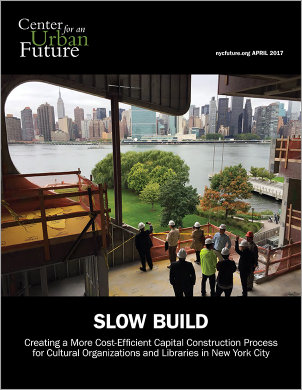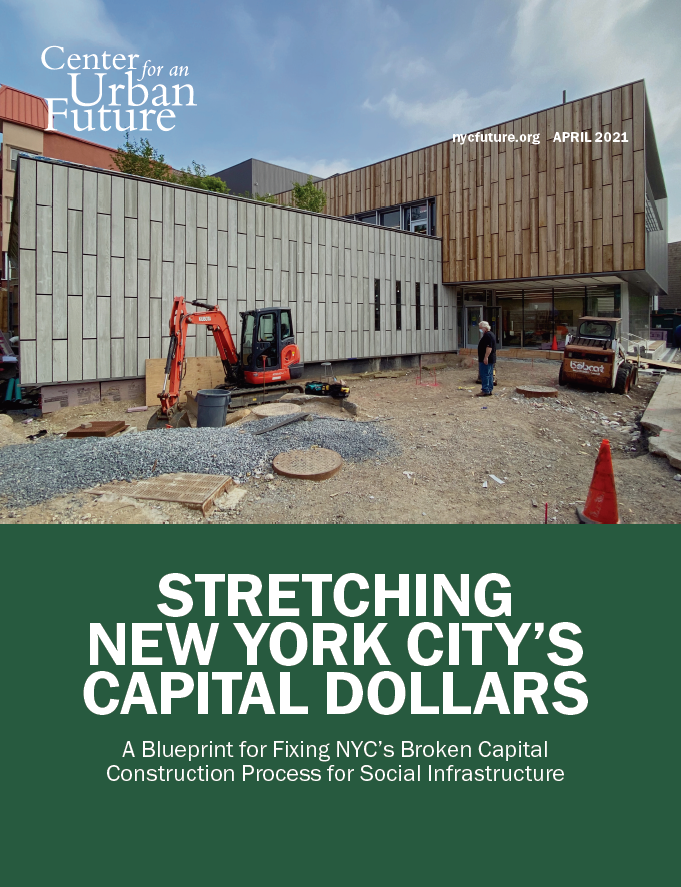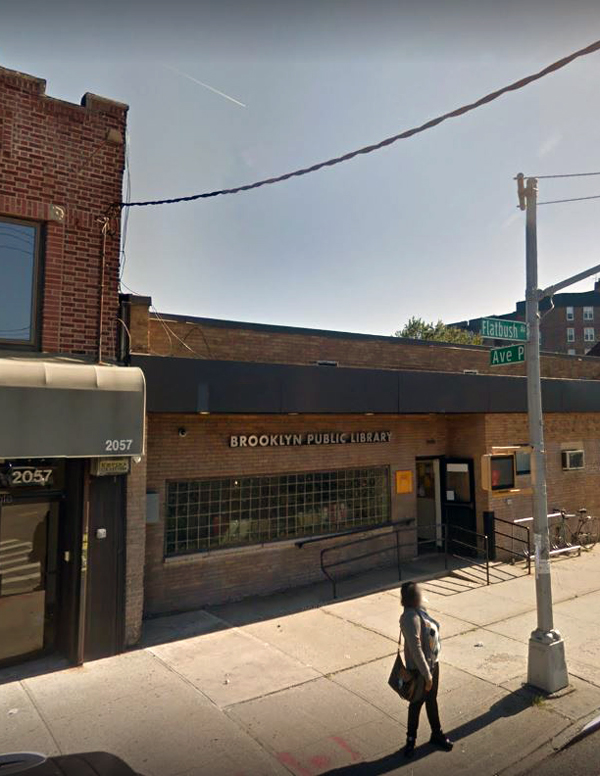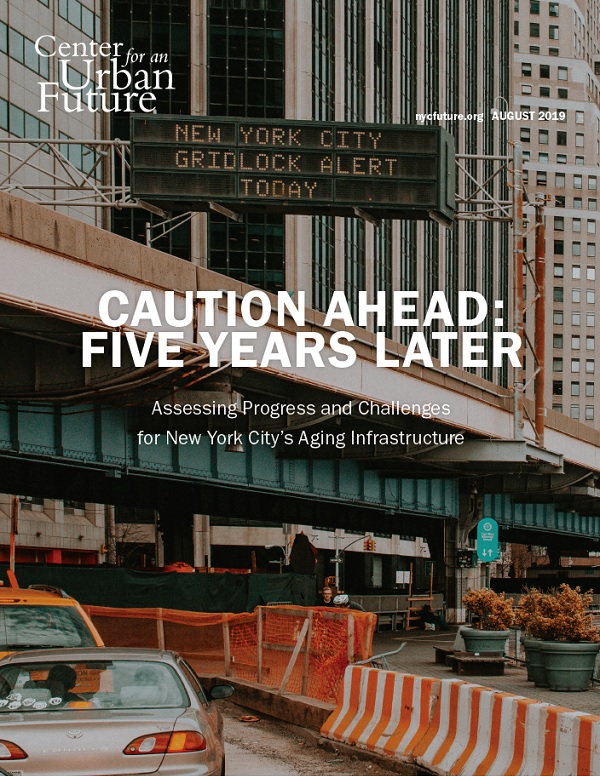Create a task force to review and reform the capital construction process.
The mayor should convene a task force to examine the current capital construction approval and management system, ensuring that representatives of the city’s libraries and cultural institutions are at the table. The task force should include representatives from DDC and its largest client organizations—such as the three library systems and members of the Cultural Institutions Group—as well as other agencies with a role in the approval process, including the Departments of Buildings and City Planning, the Fire Department, and the Office of Management and Budget. Charged with identifying and mitigating the inefficiencies that plague the current system, the task force should seek ways to streamline the CP approval process, clarify the rules regarding pass-through projects, and study the potential of a best-value contracting system.
Start systematically tracking capital project costs and timelines.
Though the Department of Design and Construction keeps track of the percent of projects completed “on time and on budget” for the Mayor’s Management Report, these scores are not based on preestablished targets and provide little insight into the delays that plague the system. In the absence of rigorous data collection, it is impossible to manage projects effectively and minimize time and cost overruns, especially given the complex bureaucracy surrounding capital construction oversight. There have been few efforts to evaluate project timelines based on current record-keeping practices, much less any coordinated effort to institute a more robust project tracking system.
The city should leverage its existing Capital Projects Dashboard and expand it to systematically track the real costs and timelines of all capital construction projects, including DDC-managed projects and those managed by other agencies. This system should track projects from the time that DDC or OMB is first notified until the final checks are cut, while measuring progress against deadlines that are established at the onset of the project. The system should also record past estimates in order to allow project managers to accurately assess performance after each phase is completed. In addition, records should reflect the initial estimated completion date so that delays in earlier phases of the project are not lost once construction actually begins.
The existing dashboard could be significantly enhanced—pulling together data and records from DDC, OMB, client agencies or institutions, and the relevant contractors—to provide a real-time snapshot of time and money spent on a given project and compares the current status to the estimates and deadlines established at the beginning of the process. This dashboard should allow project managers to drill down into specific phases of the project, compare estimates to actual costs for each individual contract, and compare results to those of similar projects.
Streamline project approval practices and reduce redundancies between OMB and DDC.
OMB is involved with nearly every decision in the capital construction process, including project scopes and costs, CP interpretations, and change orders within the contingency budget. The agency’s approach hinges on the notion that more OMB control helps to limit cost escalation. Unfortunately, the opposite is often the case: when OMB approvals take a year on average to execute and projects undergo repeated stops and starts, delays cause costs to rise. The problems are compounded by the lack of real-world contracting and construction management experience among OMB staff. In addition, decisions are often made twice, once at DDC and then again at OMB.
The city should consider reducing OMB’s role in project approvals after the initial CP approval and institute frequent randomized audits instead to ensure that all legal and finance law obligations are met. At the same time, the administration could do more to strengthen the change order review process inside DDC to inspire confidence at OMB and allow DDC to manage the contingency budget without OMB approval. With the right checks and balances inside DDC, construction professionals should be allowed to manage a project’s contingency budget, which is accounted for in the original CP approved by OMB. Minimizing the need for both agencies to review and approve subsequent adjustments can help to mitigate the current start-stop nature of DDC contracting, saving time and money.
Simplify the design review process at DDC.
The design review process for DDC-managed capital construction projects is invariably slow. The median project reviewed in this study spent more than two years in the pre-design and design phases, and, for 86 percent of projects, the design phases took longer than construction itself. For example, an agency should not discover that a parapet project does not meet Fire Department guidelines or historic preservation requirements only after it is fully designed—leading to months of delays.
With the help of the Mayor’s Office, DDC should work with other relevant departments—including the Fire Department, Department of Buildings, and Public Design Commission—to establish a common review process and agree to achievable timetables for feedback and approval. An effective design approval process will require project managers within DDC and contacts at each external agency to sign off on each proposal in a predetermined sequence, ensuring that changes to one element of a project design do not conflict with the priorities of another oversight body. If all of these approvals are granted at the beginning of a project after thorough review, the likelihood that subsequent changes will violate departmental guidelines is greatly diminished.
Strengthen DDC’s data analytics team to inform smarter decision-making.
Data is revolutionizing every aspect of organizational decision-making and DDC could benefit from increased support for its new data analytics efforts. The current team, created under Commissioner Pena-Mora, need sufficient capacity to leverage the copious data that DDC-managed projects generate, allowing the agency to analyze vendor performance, optimize purchases of raw materials, and assess the efficiency of approval processes, among many other opportunities. However, DDC lacks the capacity to fully capture, process, and interpret this data across all projects and in real time.
The city should fund an expanded agency-wide data and analytics team within DDC, which could work with existing city teams, including the Mayor’s Office of Data Analytics and the pool of technologists at the Department of Information Technology and Telecommunications, to develop and implement data analytics tools for capital construction management. These tools could help project managers by analyzing cost trends over time, predicting potential overruns and delays, comparing estimates to previous projects and industry averages, flagging potential cost savings based on fluctuating prices for raw materials, and delivering automated updates to project stakeholders.
At the same time, the existing team needs top-level buy-in from other agencies to realize the full potential of data analytics. DDC’s ability to analyze the entire capital construction process will remain limited unless the full spectrum of agencies involved agree to share information through a single system.
Institute a process for nonprofits to prequalify for discretionary capital funds.
The proliferation of discretionary funding for capital construction projects has led some nonprofits to undertake major initiatives that they are ill equipped to manage. The city should follow the lead of the HHS Accelerator system, which centralizes contracting and procurement for social service providers, and develop a similar portal for prospective recipients of capital construction dollars. This system would ensure that nonprofits are able to meet established criteria, including operating budget levels and staff capacity, before they can accept capital funds from elected officials.
Elected officials are not experts in capital financing or facilities planning and sometimes invest city dollars in organizations that lack sufficient operating support to maintain and manage large new physical spaces. In addition, some organizations seek capital funds as part of an ongoing fundraising campaign, which can lead to shifting goalposts and frequent changes to the scope of work. A prequalifiaction system would allow organizations to be matched with appropriate resources and weed out those that are unable to cope with capital construction projects
Establish dependable funding for capital construction projects, including routine state-ofgood-repair investments.
The current “rolling” capital funding system lacks measurable progress indicators and is vulnerable to sudden shifts in political priorities. Libraries, in particular, rely on individual members of the City Council and borough presidents for the majority of their capital funds, which makes long-term planning a constant challenge. As the libraries piece together funds over multiple years and across various sources, they often have to go back and forth between OMB and DDC to reevaluate project scopes, which itself generates delays and increases costs. As a result, libraries and other cultural institutions are unable to plan for their needs over the long term or create a reliable pipeline of projects.
The size and scope of the discretionary funding process is unique to New York City. Funding municipal endeavors in such a diffuse and uncontrollable manner places capital construction projects at great risk of delay, leading to cost escalations and constant uncertainty. The Mayor’s Office should develop a plan for libraries and other cultural organizations located in city-owned properties to evaluate their capital needs every five years, including state-of-good-repair projects, systems replacements, and expansions to meet increasing demand. Although this is the intent of the city’s current Asset Information Management System (AIMS), which is designed to centralize the city’s capital construction needs, the system needs to be modernized and updated to take advantage of the current best practices in capital planning. In addition, under the City Charter, AIMS is limited in scope to capital assets with a replacement cost of at least $10 million. The Mayor’s Office should consider the feasibility of including assets under $10 million to better understand the full scope of capital needs and allow budgeting for more proactive repairs and maintenance work, which often falls below that $10 million threshold. The city council should then adopt and fund a fixed fiveyear capital program, aligned with the city’s required ten-year capital strategy. This approach is particularly essential for repair and maintenance projects, as the longer that repairs go unaddressed, the costlier they become.
Standardize and disseminate capital eligibility rules and requirements.
OMB does not currently provide a guide outlining the requirements for receiving approval of a CP. The Office of the Comptroller’s Directives 7 and 10 cover basic rules for capital funding and auditing, but these are very general and require extensive interpretation by OMB staff, in accordance with state and federal law. Construction professionals caution that OMB’s interpretations are not always clear and have been inconsistent over time. Although these rules are designed to protect public dollars, they often have the reverse effect. As one top official at a cultural institution says, “The money lost to corruption is nothing compared to the money lost to delays and inefficiencies.” To improve the efficiency and transparency of the approval process, OMB should create a handbook providing an easy-to-understand summary of all capital eligibility rules and requirements with specific examples to help institutions understand the rationales behind various rulings. This document would help OMB staffers, capital construction managers at client nonprofits, and other agencies to understand how capital eligibility decisions are made and to ensure that proposals are in compliance before being submitted
Allow appropriate capital projects to be contracted through a design-build process.
Current state law requires design work and construction work be bid out, awarded, and completed separately, which can lead to inefficiencies and costs that exceed standards in the private sector. Although not all capital projects will benefit from a design-build process, this approach has been used by other governments, including certain New York State–funded projects, to reduce delays and control costs.
For large, complex projects, such as mechanical system replacements, a design-build process can help to ensure that architects, engineers, and contractors are in sync, reducing the likelihood that major changes will have to be made during the construction phase. In addition, a design-build approach can help to reduce total project durations by eliminating the bidding phase for construction and greatly reducing the likelihood that disagreements between the architects, engineers, and contractors will result in work stoppages and change orders in the build phase. The city should escalate its long-standing efforts to encourage the State Legislature to authorize design-build on appropriate capital construction projects.
Expand the use of pass-through project management.
Large nonprofit organizations can benefit from the authority to manage projects themselves. Cultural institutions report that self-managed projects lead to fewer delays, saving money for the institutions and reducing the burden on city agencies. Likewise, DDC cites the client organization as the source of the majority of project delays; shifting more capital construction projects from DDC-managed to client-managed could help reduce the total number of approvals required when clients decide to make changes once a project is underway.
However, DDC continues to oversee pass-through projects and control the purse strings, releasing reimbursements to the client organization as work is completed. As a result, pass-through projects are also subjected to a host of city rules and regulations, with various filing deadlines that have to be met on time. For instance, prevailing wage documents have to be filled out by the contractor, signed by every member of the crew, and returned to DDC. This has to happen periodically through the duration of the project or things can stall.
City agencies should expand the use of passthroughs for libraries and large cultural organizations, including both major capital construction and more modest renovation and maintenance projects. To help client organizations meet the city’s paperwork requirements, DDC should assign a project manager to help the client stay on top of coming deadlines and maintain compliance with all existing rules. In addition, the city should consider creating capital grants for libraries to self-manage necessary repair projects, similar to the Department of Cultural Affairs’ capital grants program. Lastly, DDC could pilot client-managed maintenance projects for certain smaller cultural organizations, in cooperation with DCLA and OMB, and closely compare the timelines and cost overruns to determine whether the pass-through model could work for a wider array of capital projects and clients. In addition, DCLA should publish clear guidelines for pass-through projects and standardize the process whereby pass-through permission is granted, so that client organizations know what to expect when they seek public funding for capital projects.
Improve contracting by assessing value rather than defaulting to the lowest bid.
When DDC is forced to choose the lowest bidder, as mandated by state law, the client organization ultimately pays the price. Low-bid contractors are predisposed to look for ways to make back their money, which creates an incentive to generate more change orders and find ways to recoup expenses once the project starts. Decisions that save money up front can lead to major maintenance headaches in the future— sometimes exceeding the original savings. And the most experienced contractors are often priced out of competition or forced to assign their least experienced people, leaving teams with minimal track records in charge of major construction projects.
The city should implement a risk-based contract review procedure that includes the bidder’s experience as a criterion, with metrics assessed to validate past performance. Even better would be a system that assesses contracts on value rather than price, which would require a change in state law. A leading national model, known as the Performance Information Procurement System, asks evaluations teams to consider a host of additional factors, including technical expertise, quality of materials and construction methods, projected maintenance costs over a multiyear period, and a demonstrated capacity to mitigate risk.
Create a “Director of Libraries” inside City Hall.
By creating a new position in City Hall for a Director of Libraries, the city could strengthen these institutions’ status as quasi-public agencies. Because all three systems are independent nonprofits and yet depend so heavily on city funds for the majority of their expense and capital budgets, and because the vast majority of branch buildings are owned by the city, it makes sense to appoint someone who can both exercise oversight over the libraries’ management of city assets and serve as a knowledgeable voice on the city’s side during budget negotiations. With respect to capital investments, in particular, a Director of Libraries could provide a knowledgeable perspective on what increased investments could do for library services across the city, how they could support other city goals, and how they might be best structured to create a long-term capital plan consisting of a pipeline of priority projects. A library liaison could target other efficiencies by working with the libraries, OMB and DDC to package capital investments into single contracts, create clearer design standards for new and renovated branch libraries, and pave the way for pass-through contracts for projects that draw on private donations and grants. According to Deputy DDC Commissioner David Resnick, project management support at the Department of Cultural Affairs has had a positive effect on on-time completion rates. “We have an intermediary agency on the cultural side that doesn’t really exist for libraries,” he noted in a City Council hearing. The Director of Libraries would be responsible for managing the city’s investments in its library systems, ensuring that funding is adequate to meet current needs and that the libraries are able to make the most of the city’s crucial investments in library infrastructure.





